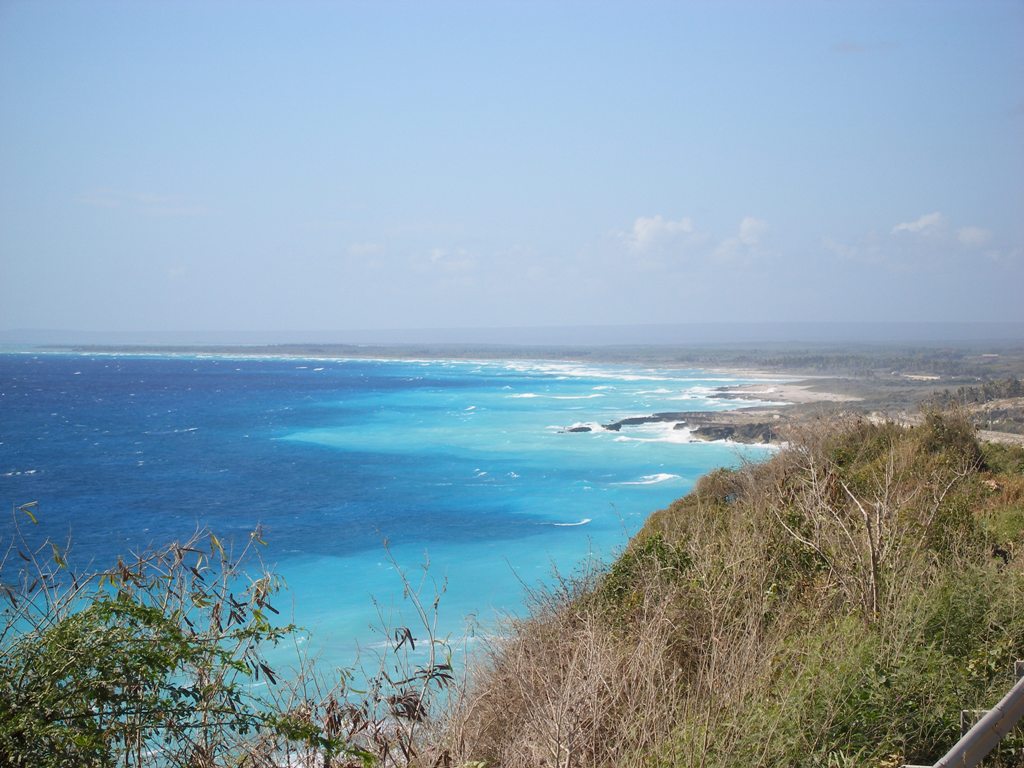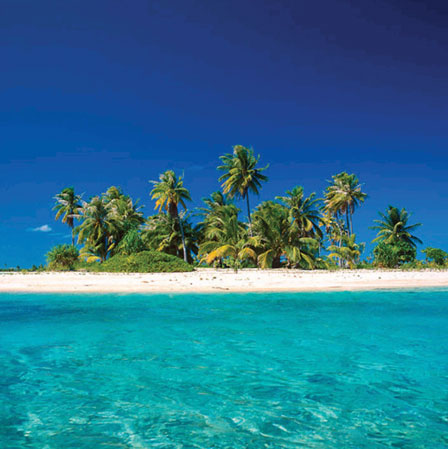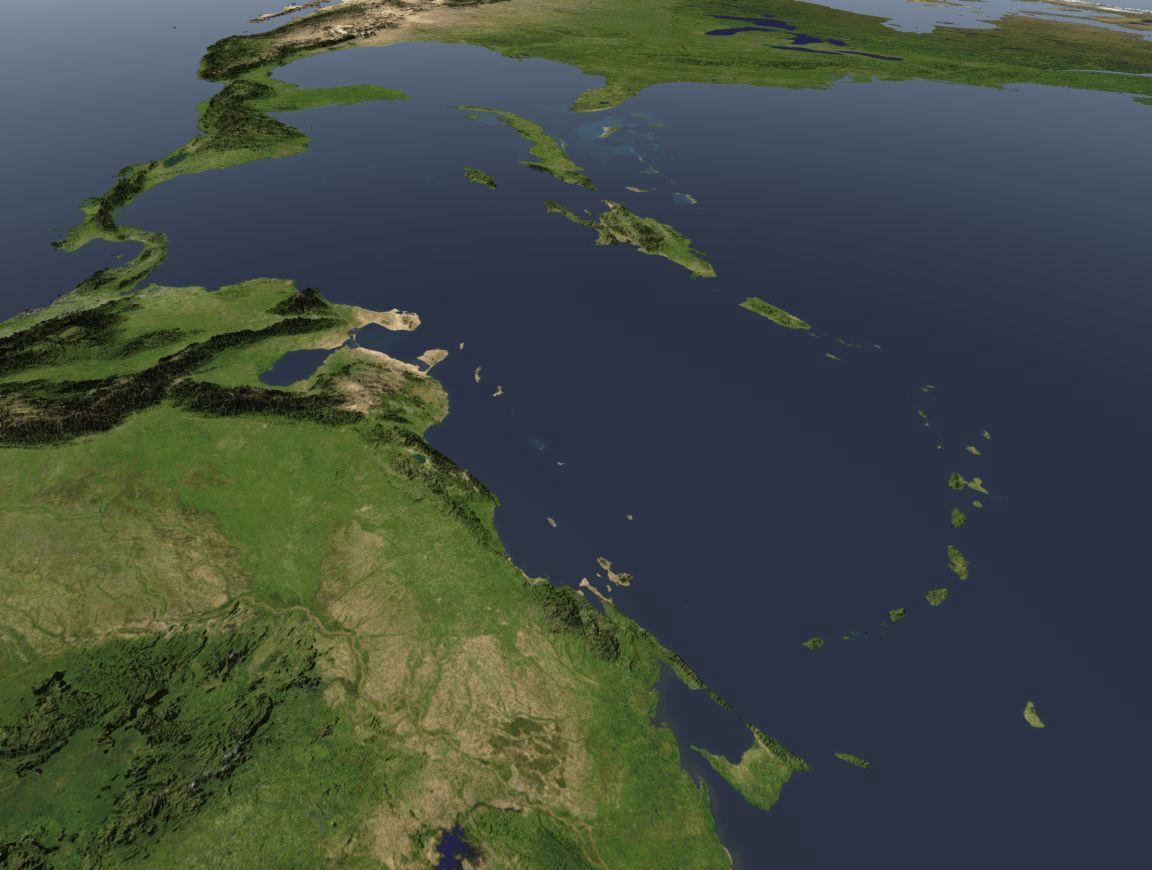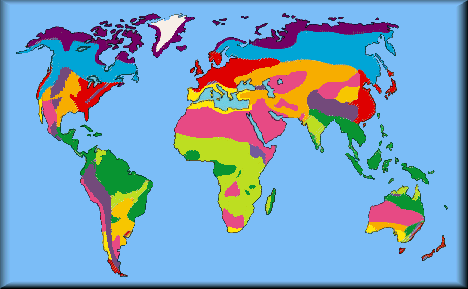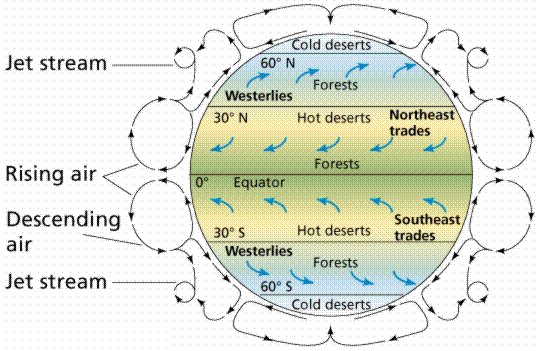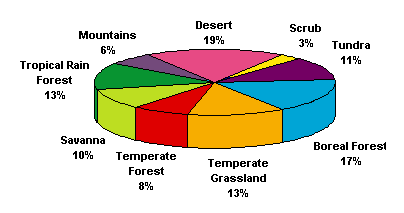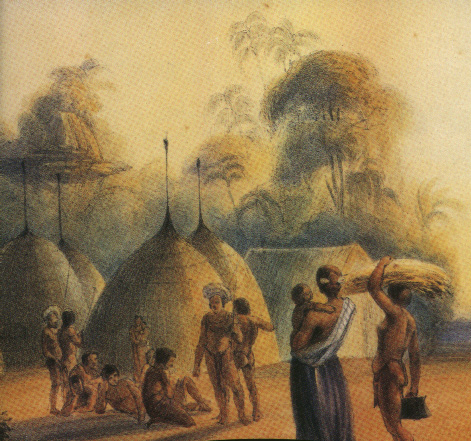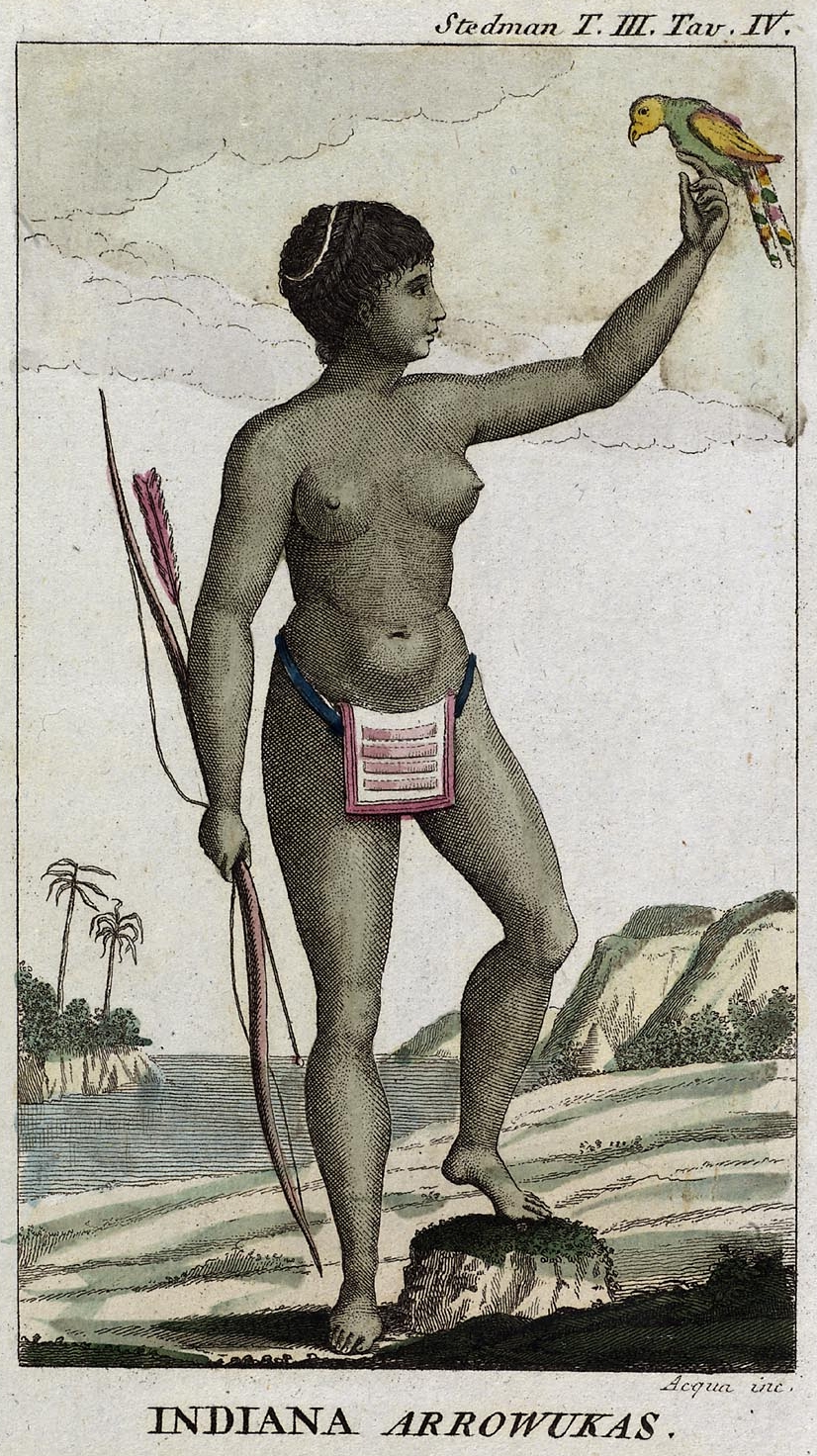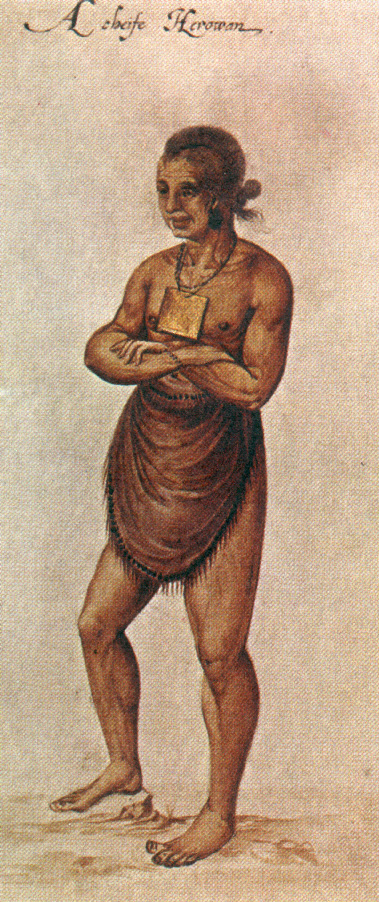inform one another.
" . . . most human groups are the product of culture, not biology."
p. 49. Steve Olson, Mapping Human History.
![]()
setting | maps | Columbus | Question One | Question Two | problem | consequences | ethnocentricity | conclusions
Columbus in the Americas, 1492-1517.
Colonization, and the ecology of invasions.
The story of American settlement is best revealed in the related subjects of: island biogeography, geographical epidemiology, famines, and cultural anthropology to yield a fuller comprehension and deeper appreciation of the ethnohistory called by Alfred Crosby: the creation of Neo-Europes due in large part to the Columbian exchange.
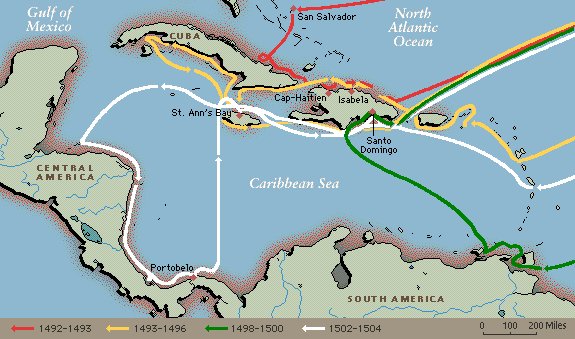 |
||
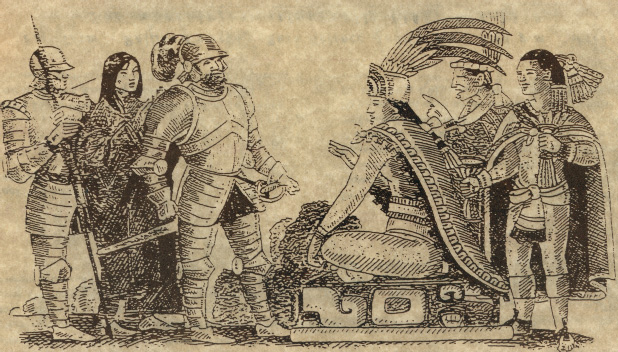 |
||
| Columbus' routes on his four voyages are depicted on the above map. | Imagining Columbus' encounters on his voyages depicted as an exchange. | |
![]()
The area of ocean encompassing over one hundred large islands, and seven thousand islands in total excluding Bermuda, is nearly 5 million km².
The total area of land is approximately 240,000 km², a ratio ( _:_ ) of sea to land of about 20:1. This ratio does not imply uniformity of dispersal nor size; on the contrary the locations, groupings and areas of the islands are very uneven. In all respects, whether considering physical or biological attributes, the key-word is diversity. The complexity makes it difficult to state reliably how many islands there are, but, allowing for the availability and accuracy of sources and some interpretation of definitions, it can be said that there are about 100 permanently inhabited islands and another 50 or so major vegetated cays (keys) and rocky islets with names.
The geologically oldest land areas of the modern Caribbean are at the extreme ends of the arc of islands in Cuba and Trinidad. Jurassic rocks have been identified in Cuba suggesting continental relationships and there are geological links between that island and Yucatán. Some biological distribution patterns support the hypothesis of a Cretaceous land-mass occupying the position of the Caribbean Sea (Weyl 1965) indicating direct links between northern South America and the Greater Antilles avoiding Central America (Stearn 1971).
Competitive exclusion principle:
Creatures "must not only excel in the struggle for existence, they must also adapt themselves to meet new conditions and still win out over their competitors."
(Storer, p. 98)
"No two species can occupy the exact same niche over time without one giving way to the more adapted or more numerous species."
(Dasmann, pp. 78-79 [1984])
"Then sometime less than 200,000 years ago, a distinct group of humans appeared, almost certainly in eastern Africa. Initially this group must have been very small, occupying an area that may have been no larger than the present day Israel (Connecticut). . . . The oldest known fossil skull thought to belong to a member of this group was discovered by Richard Leakey in 1967 on the shore of the Omo River in Ethiopia. Dated to about 130,000 years ago [now 195,000 years old], the reconstructed skull has a steeply rising forehead, a relatively flat face, and much smaller brow ridges than previous members of Homo had. Compared to earlier skulls, this one seems hauntingly familiar . . .this face, despite its antiquity, is that of an ancestor."
Steve Olson, (2002), pp. 23-24.
U.K. Museum of Natural History, "Oldest human story".
A map of the planet's biomes or extensive, biological communities in relation to the prevailing winds.
Any exotic species will crowd out a native species when it is introduced and occupies the same niche as the endemic species that it replaces.
Pigs & Chickens replaced native ground dwelling species like, turtles, lizards and disrupted fields planted in manioc, yams, squash or beans, the basis of Indian food supplies.
African slaves accustomed to the biological communities of the tropical areas, especially rain forests and savanna. Africans were were brought by the Portuguese, Spanish, Dutch, French ,and English to replace the indigenous Brazilian and island populations. Many indigenous people were victims of European diseases, overwork, and famines that occurred subsequent to contact with the colonizers. Slaves began to arrive from Africa as early as the 1520s. Sugar replaced tobacco as an important crop from the West Indies between 1509 and 1590.
Alfred Crosby and Bardic history
What accounts for Columbus' success?
- Timing – Aztec's believed in visions
- natives' predisposition to peace – and where not Native nations were in disarray (subject's resistance to Aztec & Inca)
- Biology – horses, cows, pigs, chickens, & vermin.
- Culture – beliefs about faith & European exceptionalism { God had made for the triumph of Catholicism in the 1400s}
- Isolation and lack of resistance to diseases from Europe – Smallpox, Chickenpox, Measles, Mumps, Plague
- Technology – weapons: cannons & guns; ships; compass & clock, maps & Latin language.
- Not numbers, natives always outnumbered the European colonists.
![]()
map | Columbus | problem | consequences | ethnocentricity | conclusions
Columbus' journals of his voyage:
so writer Barbara Hyatt feels that
Columbus had a "messianic idea" that in Hispaniola he could find enough gold to restore Jerusalem to Christendom – to extend the Iberian reconquista to the holy city itself!
Spanish experience in the Crusade to oust the Moors [the reconquista], who where of the Islamic faith, led Conquistadores and missionaries to treat non Christians as threats to the internal security of the Crown. In addition heathens were unable to experience their own salvation from hell, so they had to be converted at any cost, even death. So intent where Europeans to claim their rewards in heaven, that they forced compliance among the indigenous peoples they intimidated.
![]()
PROBLEM:
conflicting statements in a diary
The double reckoning of Christopher
Columbus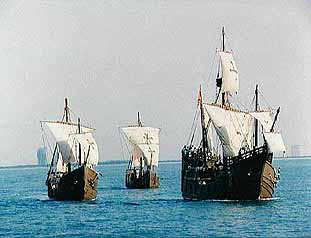
by Barbara Hyatt
first he is glib:
"Today it rained."
"Adrift"
More from Columbus' journals :
August 3rd, Pinta it is noted has a breakdown in her rigging – en route to the Canaries – & Columbus suspected sabotage. He wrote:
"The pilots of the three ships disagreed on our location, adrift."
His diary raises the twin issues of: 1) the ethics of voyage and 2) the function of discovery.
His genocide of the Arawaks and the Caribs reveals a tension in the Medieval mind – that is to say in the Medieval Christian, European sense of the world, souls were to be saved, yet non-believers were threats to the redemption of man because the second coming of Christ would be delayed so long as non-believers populated the world. The tensions was resolved based on the hubris of those European arrogant with such knowledge. Spanish, Portuguese, English and French all engaged in torture of the natives because they were mislead by those who accompanied or were responsible for expeditions. European priests such as Bartholomew de Las Casas who objected to the destruction of the natives, were a rare exception to the soldiers, sailors, and settlers who followed the Conquistadores into the lands of the Native American peoples..
![]()
setting | map | Columbus | consequences | ethnocentricity | conclusions
Such ethnocentric beliefs led to the Spanish and Portuguese:
A) enslavement of the native islanders,
B) rape of the native women,
C) destruction of sacred, native sites of worship.
IN THE WEST INDIES
Columbus describes the young women
"as naked as their mother's bore them."
Of these natives he says:
"They should be good and intelligent servants."
Columbus deliberately decided to minimize the size of the Atlantic for fear of his crew's response, "deciding to count less distance than was run so that if the voyage should be long the men would not be frightened or dismayed."
{9 September 1492}
"I do not wish to tarry, in order to reach and visit many islands so as to find gold."
{Oct. 15}
December 6, he anchored off of Hispaniola (Haiti & Dominican Republic)
"all the trees were as different from ours as the day from the night and so the fruits, the herbage, the rocks & all things."
of the Island Arawaks:
"are very unskilled with arms . . . [and] could all be subjected & made to do all that one wished."
"In another island . . . greater than Espanola . . . . there is gold beyond counting !"
Taino, Ciboney, Arawak, and Carib were names interpreted from the peoples of the Caribbean.
Arawak and woman village as imagined by artists.
![]()
setting | map | Columbus | problem | consequences | conclusions
Crosby's Conclusions:
"It seems more likely that the number of human beings on this planet today would be a good deal smaller but for the horticultural skills of the Neolithic American."
[p. 202
"The Columbian exchange has left us with not a richer but a more impoverished genetic pool. We, all of the life on this planet, are less for Columbus, and the impoverishment will increase."
[p. 219
"The . . . exchange continues & will continue."
"The positive result has been an enormous increase in food production &, thereby, in human population. The negative results have been the destruction of ecological stability over enormous areas and an increase of erosion that is so great that it amounts to a crime against posterity."
[p. 211
"The source of the earliest migration of Old World peoples to the New World" was?
[213
The "greatest transoceanic migration in all human history began, at first a freshet in the" Antilles, called by the Portuguese the West Indies to distinguish them from Indonesia, the spice islands, and Singapore in the East Indies.
[214
"the Columbian Exchange has created markets for Europe without which she would have been and would now be a very different and much poorer region of the earth, and poverty a palpably heavier burden on the connubial propensities of young adults."
Biodiversity | Science related pages
Did the Columbian Exchange and its associated events enable conditions to create capitalism or did the commerce of slavery and the triangular trade among Europe, Africa and the Americas lay the early commercial foundations of capitalism in the sixteenth, seventeenth and eighteenth centuries?
Steve Olson, Mapping Human History: Genes, Race, and Our Common Origins.(Boston: Houghton Mifflin, 2002.)
race is nonexistent, yet the bias persists that racial divisions are biological actualities,
pp. 60-61
"people are so damn similar."
p. 136.
![]()
setting | map | Columbus | problem | consequences | ethnocentric | conclusions
